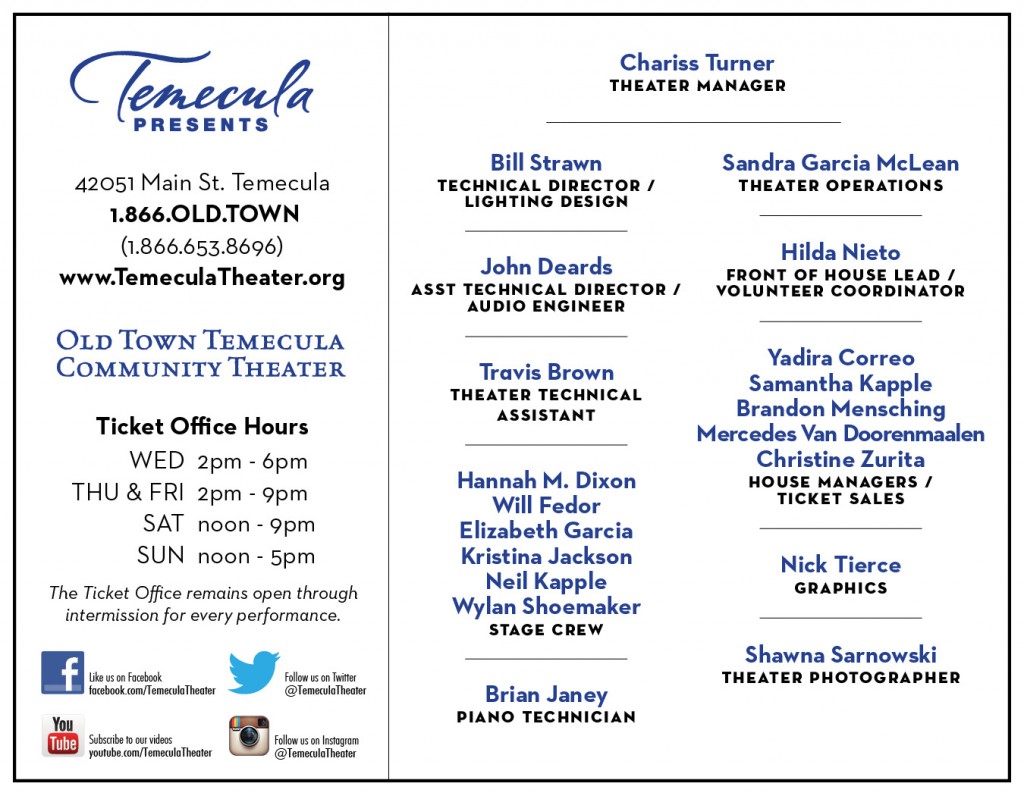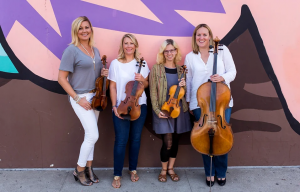Quartet Nouveau
Missy Lukin & Batya MacAdam-Somer, violins
Annabelle Terbetski, viola; Elizabeth Brown, cello
Today’s Program
Rhiannon Giddens (Arr. Jacob Garchik)
At the Purchaser’s Option with variations
Franz Joseph Haydn
String Quartet Op. 33 No. 3 “The Bird”
Allegro moderato
Scherzo, Allegretto
Adagio ma non troppo
Finale, Presto
Ludwig van Beethoven
String Quartet No. 15 in A minor Op. 132
Molto adagio
Danish String Quartet
Last Leaf
Shore
Polska from Dorotea
Tjønneblomen
Menuet no. 60
Æ Rømeser
Intermezzo
Shine You No More
Program Notes
Rhiannon Giddens’ At the Purchaser’s Option with variations is an instrumental variation of a song from her album Freedom Highway (Nonesuch, 2017), arranged by Jacob Garchik. She wrote the song after finding in a book a 19th-century advertisement for a 22-year-old female slave whose 9-month-old baby was also for sale, but “at the purchaser’s option.” This piece comes from that advertisement, and from thinking about what that woman’s life might have been like. This piece was commissioned for Fifty for the Future: The Kronos Learning Repertoire, a project of the Kronos Performing Arts Association. The score and parts are available for free online kronosquartet.org
Haydn’s 83 string quartets span nearly his entire career, but rather than being written continuously, they appeared in bunches. When the six quartets of his Opus 33 were completed in 1781, they were his first quartets in nine years. Haydn offered handwritten copies of the manuscripts to wealthy patrons, advertising them as having been written “in a quite new, special manner.” Exactly what he meant by this has been the source of some debate, and cynical commentators have felt that Haydn’s enthusiasm for the novelty of these quartets was merely a sales pitch. String Quartet Op. 33 No. 3 “The Bird” takes its nickname from the chirping grace notes that decorate so many of its themes. Over steady accompaniment from the middle voices, the first violin announces the main theme of the Allegro moderato. Haydn dispenses with a minuet in this quartet, replacing it with a movement he marks Scherzando. This is not the sort of scherzo that Beethoven would write a generation later, but it is faster than minuet tempo, and surprising accents give the melodic lines unusual weight. The outer sections remain in the lowest registers of all four instruments (someone noted of this movement that C major has never sounded so dark as it does here), and the trio section offers several surprises: a duo for the two violins only, it brings back some of the “bird music” of the opening movement. The Adagio belongs almost entirely to the first violin its simple opening melody grows florid and complex as the movement unfolds. The finale is a rondo reportedly based on a Slavonic folk tune. This movement, aptly marked Presto, zips along with unflagging energy. Seldom has there been more gloriously apt writing for string quartet, and seldom has there been more cheerful music than this graceful romp, which rushes right to its close and, like smoke, disappears silently and effortlessly.
-Eric Bromberger
Beethoven’s String Quartet Opus 132 in A Minor was written in 1825, just two years before his death. The composer’s health was deteriorating. His title for the third movement, “Sacred song of thanks from a convalescent to the Godhead, in the Lydian Mode” refers to his relief from a serious illness that had rendered him unable to work for a month. Beethoven’s use of a mode, rather than a major or minor scale, points to what Beethoven scholar Maynard Solomon calls, “a conspicuous fusion of retrospective and modernist tendencies in Beethoven’s late style…”. There are a number of instances in the third movement that demonstrate this: the 5 phrase structure of the modal hymn-like section which opens the movement, for example. Beethoven returns to this material twice more. The second time he employs a kind of cantus firmus in the first violin above increasingly complex harmonic motion. This then gets spun out and stretched further in the third iteration, bringing the movement to its dramatic conclusion.
Last Leaf is an album of arranged Nordic traditional tunes by the Danish String Quartet. These selections from Last Leaf are well-paced arrangements of myriad dance tunes from across the Nordic countries – from more refined waltzes and minuets to the wilder fare of polskas and reels. These pieces conjure a magical atmosphere and is a fun example of Nordic fiddle playing.
Quartet Nouveau
Quartet Nouveau & Chamber Music Institute formed as a 501 © 3 nonprofit organization in January 2013 with the mission of making chamber music available to the entire San Diego community. Quartet Nouveau is a string quartet based in San Diego where all four musicians freelance and teach within the community. Known for their fresh approach to classical music, they hope to inspire students to play this very same music one day. The members of Quartet Nouveau all graduated from the nation’s top universities with Masters and Doctoral degrees.

Volunteer as an usher at the Old Town Temecula Community Theater

